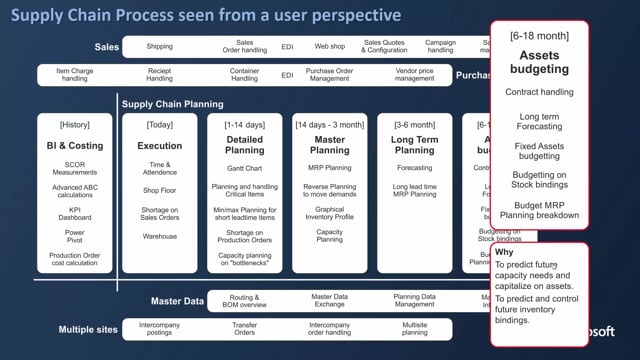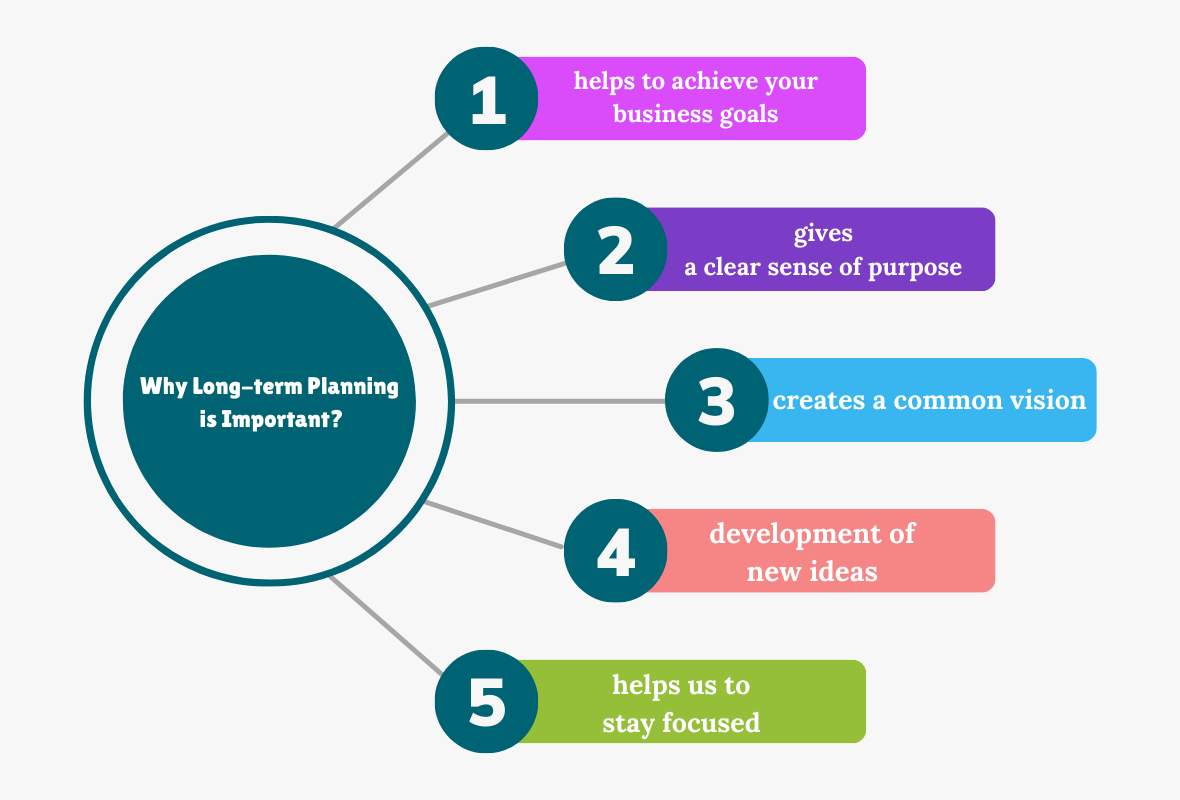Long-Term Time Planning: The Key to Achieving Your Goals and Success
When it comes to managing time effectively, long-term time planning is one of the most crucial strategies you can adopt to ensure success. Whether you’re aiming to reach career milestones, personal goals, or overall life satisfaction, developing a clear and structured long-term plan will help you stay on track. In this article, we’ll explore the importance of long-term planning, how to create a comprehensive plan, and strategies to stay committed to your goals.

Why Long-Term Time Planning Is Essential
In the rush of everyday tasks and short-term goals, it’s easy to overlook the importance of long-term planning. However, without a clear vision for the future, achieving meaningful success becomes a difficult and uncertain journey. Here are a few reasons why long-term planning is crucial:
1. Provides Direction
A long-term plan gives you a clear roadmap for your future. It helps you understand what you need to do today to achieve your objectives over months or years. Without a defined destination, it’s easy to feel lost or overwhelmed by day-to-day tasks.
2. Helps Set Priorities
Long-term time planning allows you to prioritize important activities and allocate resources to those that align with your broader goals. This ensures you’re not distracted by trivial or unimportant tasks that don’t contribute to your long-term success.
3. Improves Focus and Motivation
When you have a clear vision of your future, you’re more likely to stay motivated. Knowing where you’re headed makes it easier to stay focused on your goals, even when you face challenges along the way.
4. Prevents Burnout
Long-term planning helps you balance your work and personal life, preventing exhaustion and burnout. By setting achievable long-term goals and breaking them into smaller tasks, you ensure a manageable workload that’s sustainable over time.

5. Adaptability to Change
While life is unpredictable, having a long-term plan allows you to adapt to changes more effectively. A solid plan includes flexible elements that can be adjusted as circumstances change, keeping you on track even when things don’t go as expected.
How to Create a Long-Term Time Plan
Effective long-term time planning requires a thoughtful approach. Here are the steps to create a comprehensive plan:
1. Set Clear, Specific Goals
Start by identifying your long-term goals. These could be related to personal growth, career advancement, financial stability, or relationships. Make sure your goals are specific, measurable, achievable, relevant, and time-bound (SMART goals). For example:
- Personal goal: Read 20 books in the next 2 years to improve knowledge and personal growth.
- Career goal: Earn a promotion to a managerial position within the next 5 years.
- Financial goal: Save $100,000 for retirement within 15 years.
2. Break Down Goals into Actionable Steps
Once your long-term goals are clear, break them down into smaller, manageable steps. This approach, known as chunking, makes large goals feel more attainable and keeps you motivated.
- For a career goal like earning a promotion, actionable steps might include gaining specific skills, improving your performance, networking with key colleagues, and taking on leadership roles within the team.
3. Create Milestones and Deadlines
For each of your smaller steps, set specific milestones and deadlines. These checkpoints will allow you to measure your progress and stay on track. If necessary, adjust your timeline based on changing circumstances or new opportunities.
4. Plan for Potential Obstacles
Identify potential challenges you might face on the way to achieving your goals. Plan for these obstacles in advance and come up with strategies to handle them. For example, if you plan to save money for retirement but encounter unexpected expenses, consider cutting back on non-essential spending.
5. Review and Adjust Your Plan Regularly
Long-term plans should be dynamic, not static. Set aside time at least once every quarter or year to review your progress, assess your goals, and make adjustments as necessary. This ensures that your plan remains aligned with your changing priorities and life circumstances.
Short-Term vs Long-Term Time Planning
One common challenge people face when planning is the balance between short-term and long-term priorities. Both are important, but they serve different purposes. Short-term planning focuses on immediate tasks, whereas long-term planning lays out a vision for the future. Understanding the differences between these two types of planning will help you prioritize more effectively.

Short-Term Planning
Short-term planning typically covers a few days, weeks, or months. It is concerned with achieving immediate goals and completing urgent tasks. This type of planning is ideal for tasks like:
- Daily to-do lists
- Weekly objectives
- Preparing for meetings or events
Long-Term Planning
Long-term planning focuses on broader, more ambitious goals and spans years. It’s designed to help you achieve meaningful milestones in your career, personal life, or finances. This planning is more strategic and should align with your overall life goals.
The Key Difference: Short-term plans help you execute immediate tasks, while long-term plans guide your broader, more strategic objectives.
Benefits of Long-Term Time Planning
1. Increased Control Over Your Time
With a well-structured long-term plan, you take control of your time. Rather than reacting to events as they come up, you’re proactively managing your schedule to achieve your goals.
2. Better Decision Making
Having a long-term plan enables you to make more informed decisions. Whether you’re choosing between different career opportunities or evaluating a new project, your long-term goals will provide a framework for deciding what’s best for your future.
3. Sustained Progress
Long-term planning ensures that you’re consistently moving forward, even if the progress feels slow at times. By focusing on long-term outcomes, you maintain momentum and avoid getting stuck in the cycle of short-term distractions.
4. Improved Confidence and Clarity
When you have a clear plan in place, you’ll feel more confident in your ability to achieve your goals. The clarity that comes with long-term planning can reduce anxiety and self-doubt, enabling you to take bold steps toward success.
Tips for Staying Committed to Your Long-Term Plan
Staying committed to a long-term plan can be challenging, especially when life throws unexpected challenges your way. Here are a few tips to help you stay on course:
1. Track Your Progress
Tracking progress regularly can help keep you motivated. Use journals, spreadsheets, or apps to track your achievements and setbacks. Celebrate small wins along the way to maintain enthusiasm for your goals.
2. Stay Flexible
While consistency is key, flexibility is just as important. Life changes, and your priorities may evolve over time. Be willing to adjust your long-term plan as needed to stay aligned with your goals and current circumstances.
3. Create a Support System
Surround yourself with people who support your long-term vision. Whether it’s a mentor, family member, or friend, having someone to provide guidance and encouragement can make all the difference in maintaining your commitment.
4. Visualize Your Success
Visualizing the end result of your long-term plan can help you stay focused. Picture yourself achieving your goals and enjoying the benefits that come with them. This positive reinforcement can fuel your determination.
Frequently Asked Questions (FAQs)
1. How do I stay motivated for long-term goals?
Staying motivated for long-term goals requires setting clear milestones, tracking progress, and celebrating small victories. It also helps to visualize the positive outcomes that come with achieving your goals.
2. How often should I review my long-term plan?
You should review your long-term plan at least once a year, or quarterly if possible. This allows you to adjust your goals based on changes in your circumstances and track your progress effectively.
3. What if I encounter unexpected obstacles during my long-term planning?
Obstacles are a natural part of any long-term plan. The key is to stay flexible and adapt. Adjust your timeline, seek advice if needed, and find new ways to stay on track.
4. How do I balance short-term and long-term goals?
By understanding the differences between short-term and long-term goals, you can balance both effectively. Short-term goals should feed into long-term objectives, so prioritize tasks that move you closer to your broader goals while handling immediate responsibilities.
Conclusion
Long-term time planning is essential for anyone looking to achieve meaningful success. It provides direction, helps set priorities, and offers a framework for making informed decisions. While it’s important to stay flexible and adaptable, a well-crafted long-term plan can transform your life by guiding you toward your aspirations. By following the steps outlined in this article, you can create your own actionable and achievable long-term plan that leads to sustained success.
Start today, and take the first step towards a more structured and purposeful future!

